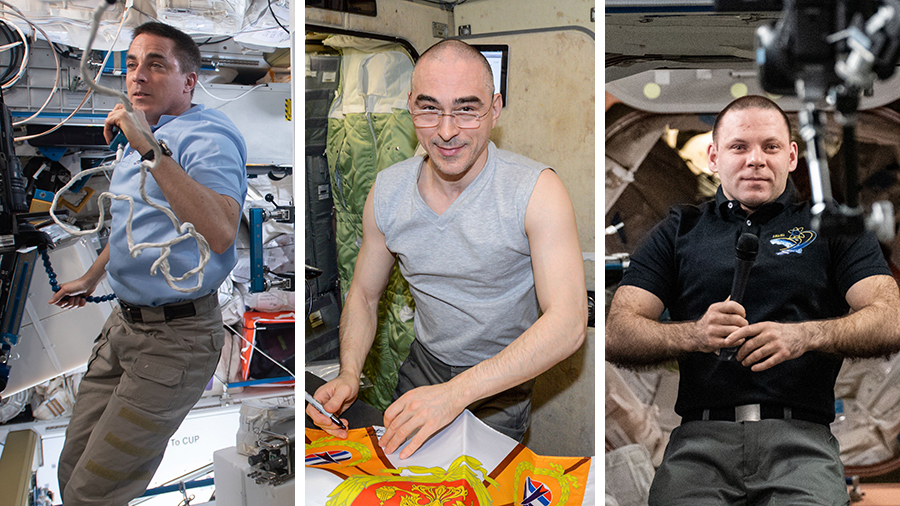DNA Repairs, Self-Replicating Materials Highlight Thursday’s Research

Thursday’s science schedule aboard the International Space Station focused primarily on DNA and physics research including ongoing Earth photography sessions. The Expedition 63 trio also maintained life support gear and packed a Russian cargo ship.
The space environment affects a variety of biological and physical phenomena adapted and designed for Earth’s gravity and atmosphere. Organisms from microbes to humans experience a variety of critical changes in microgravity. Fuels, materials and a host of other physical conditions also go through a series of important modifications. NASA and its international partners study these effects to ensure the health of astronauts and safety of spacecraft planned for future missions to the Moon, Mars and beyond.
DNA studies have been ongoing for years on the station to understand the long-term impacts of radiation and weightlessness on biology. This morning, Commander Chris Cassidy set up and checked out a DNA-monitoring device for the Genes In Space-6 experiment. The portable, handheld miniPCR-16 device, also used in Earth laboratories, provides insight into the repair mechanisms of DNA-damaged cells caused by space radiation.
Cassidy then turned his attention to unique materials that self-assemble and self-replicate with powerful implications for future space voyages. He set up a specialized microscope during the afternoon to observe particles suspended in fluids that self-organize into crystalline structures. The experiment takes place inside the Fluids Integrated Rack and explores the possibilities of 3D printing and additive manufacturing in microgravity.
The two station cosmonauts from Russia, Anatoly Ivanishin and Ivan Vagner, swapped out and activated Earth observation hardware to continue monitoring and forecasting natural and man-made catastrophes. Ivanishin then serviced communications equipment before cleaning ventilation filters in the Zarya module. Vagner contributed to the ventilation system cleaning inside the Zvezda service module while also loading the Progress 75 resupply ship with trash and discarded gear.
from Space Station https://ift.tt/2RzAliL
Comments
Post a Comment